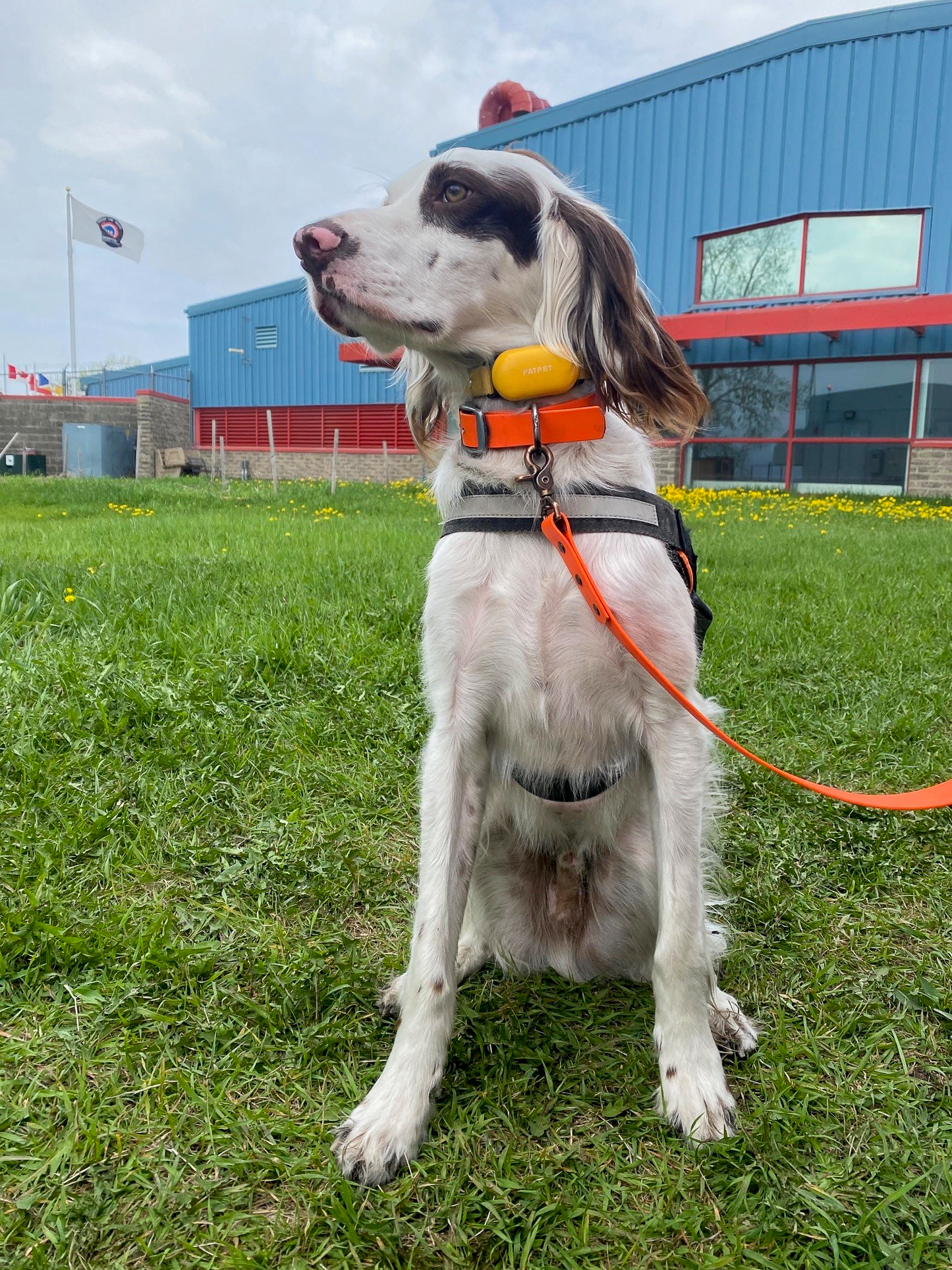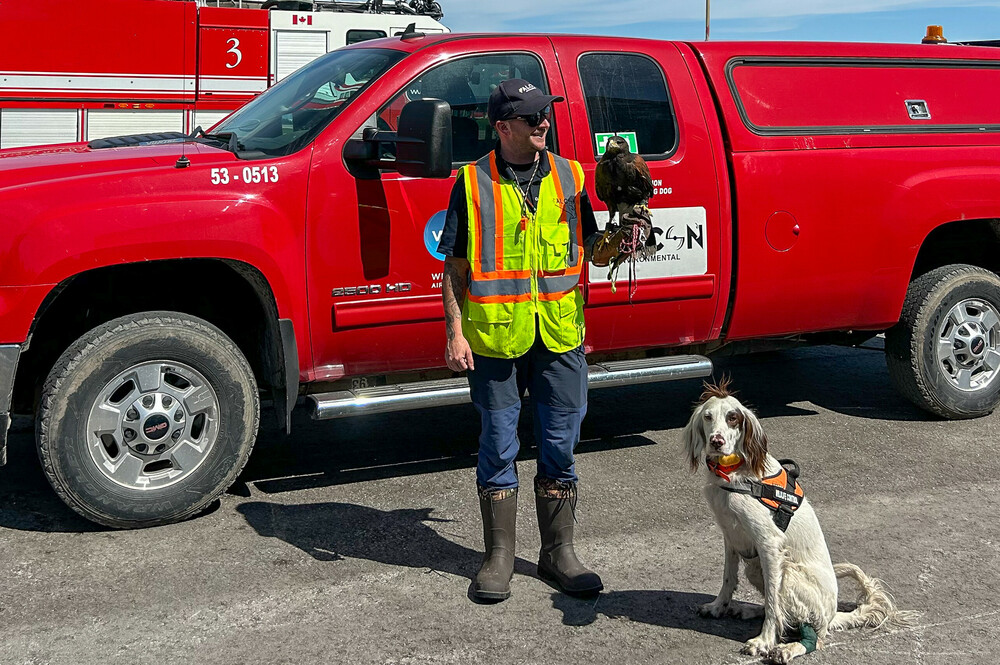Did you know birds and other wildlife can pose a risk to planes when they get too close to an active runway? With safety being our number one priority at Winnipeg Richardson International Airport, we've developed a dynamic wildlife control program in partnership with Falcon Environmental to help ensure safe landings and takeoffs for all.
During the COVID-19 pandemic, reduced air traffic led to an increase in wildlife movement around the airport. To address this, Winnipeg Airports Authority's Sustainability and Risk Management teams brought in additional services, including Falcon Environmental, a leading wildlife management and conservation company that focuses its work in such places as airports.
But first things first—meet Huckleberry, our favourite furry member of the wildlife control team! He's more than just a cute face, though. Huckleberry's English Setter instincts guide the way as he chases geese away from the airfield and deters them from returning. His partner in crime? A hawk with years of wildlife control experience. Under the care of Rudy Clifford, an environmental scientist and falconer, the trio works together to implement sustainable wildlife abatement strategies that keep YWG's passengers and feathered friends safe.
"We aim to do everything as sustainably as possible, using natural methods that deter wildlife without causing harm," says Clifford. "Dogs like Huckleberry are perceived as predators by wildlife, making them highly effective deterrents. Unlike other methods that can lose effectiveness over time, the consistent threat of a predator is something wildlife instinctively avoids."
Although Huckleberry began working with birds of prey just a few months ago, the unconventional pair quickly learns to see each other as working partners. Hawks, also known as raptors or birds of prey, look for cues and leverage a dog’s keen sense of smell as they patrol the airfield together. Hawks work at an optimal flight weight, and their food intake is carefully measured to ensure they get enough by the end of a shift while staying motivated to work. As Clifford puts it, falconry is working with an animal that is still wild but decides to stick around because they like the resources you provide.

Our team also uses a proactive approach to support long-term wildlife prevention on the airfield. By modifying the ecosystem to prevent water from pooling and strategically managing vegetation growth, we’re reducing the risk of habitation. This approach ensures we are always one step ahead in keeping the airfield and the sky above it safe.
WhYWG? offers a behind-the-scenes glimpse at how YWG operates, giving insight into what you might experience when travelling through the airport. Curious about something in particular? Send us your question on social media!



